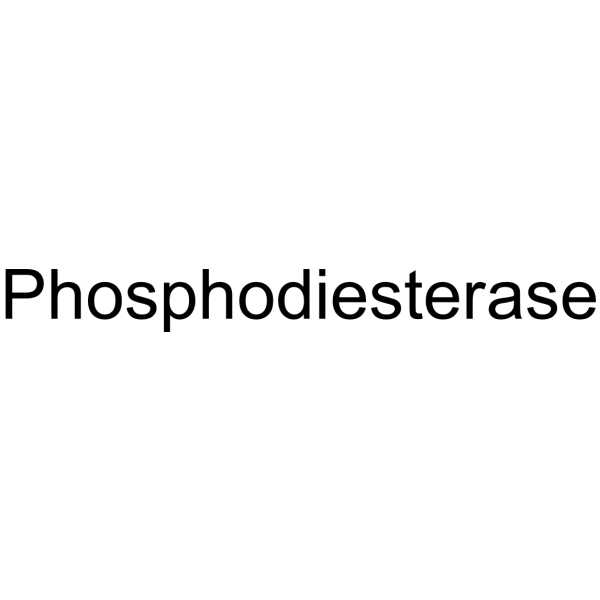Phosphodiesterase

Phosphodiesterase structure
|
Common Name | Phosphodiesterase | ||
|---|---|---|---|---|
| CAS Number | 9025-82-5 | Molecular Weight | N/A | |
| Density | N/A | Boiling Point | N/A | |
| Molecular Formula | N/A | Melting Point | N/A | |
| MSDS | Chinese USA | Flash Point | N/A | |
|
Effects of pH on the production of phosphate and pyrophosphate by matrix vesicles' biomimetics.
Calcif. Tissue Int. 93(3) , 222-32, (2013) During endochondral bone formation, chondrocytes and osteoblasts synthesize and mineralize the extracellular matrix through a process that initiates within matrix vesicles (MVs) and ends with bone mineral propagation onto the collagenous scaffold. pH gradient... |
|
|
Contribution of adenosine-producing ectoenzymes to the mechanisms underlying the mitigation of maternal-fetal conflicts.
J. Biol. Regul. Homeost. Agents 27(2) , 519-29, (2013) The interactions taking place between mother and embryo have been the focus of detailed studies in recent years, where pregnancy is considered as an in vivo transplant. The immune systems of the mother and the embryo together establish a condition of toleranc... |
|
|
Inflammatory cytokines induce a unique mineralizing phenotype in mesenchymal stem cells derived from human bone marrow.
J. Biol. Chem. 288(41) , 29494-505, (2013) Bone marrow contains mesenchymal stem cells (MSCs) that can differentiate along multiple mesenchymal lineages. In this capacity they are thought to be important in the intrinsic turnover and repair of connective tissues while also serving as a basis for tissu... |
|
|
Failed upregulation of TFAM protein and mitochondrial DNA in oxidatively deficient fibers of chronic obstructive pulmonary disease locomotor muscle.
Skelet. Muscle 6 , 10, (2016) Low mitochondrial content and oxidative capacity are well-established features of locomotor muscle dysfunction, a prevalent and debilitating systemic occurrence in patients with chronic obstructive pulmonary disease (COPD). Although the exact cause is not fir... |
|
|
Binding and biomimetic cleavage of the RNA poly(U) by synthetic polyimidazoles.
Proc. Natl. Acad. Sci. U. S. A. 109(32) , 12884-7, (2012) Four polyimidazoles were used in the binding and cleavage studies with poly(U). The two polydisperse polyvinylimidazoles were previously described by others, while the other two new polymers of polyethyleneimines were prepared by cationic polymerization of ox... |
|
|
Unraveling the contribution of ectoenzymes to myeloma life and survival in the bone marrow niche.
Ann. N. Y. Acad. Sci. 1335 , 10-22, (2015) The bone marrow provides a protected environment for generating a vast array of cell types. Bones are thus a dynamic source of structural components and soluble factors used either locally or at a distance from their site of production. We discuss the role of... |
|
|
Non-fluorescent RNA in situ hybridization combined with antibody staining to visualize multiple gene expression patterns in the embryonic brain of Drosophila.
Methods Mol. Biol. 1082 , 19-35, (2014) In Drosophila, the brain arises from about 100 neural stem cells (called neuroblasts) per hemisphere which originate from the neuroectoderm. Products of developmental control genes are expressed in spatially restricted domains in the neuroectoderm and provide... |
|
|
Determination of the proportion of total soil extracellular acid phosphomonoesterase (E.C. 3.1.3.2) activity represented by roots in the soil of different forest ecosystems.
ScientificWorldJournal 2012 , 250805, (2012) The aim of this study is to present a new method for determining the root-derived extracellular acid phosphomonoesterase (EAPM) activity fraction within the total EAPM activity of soil. EAPM activity was determined for roots, organic and mineral soil. Samples... |
|
|
Novel compound heterozygous mutations in ENPP1 cause hypophosphataemic rickets with anterior spinal ligament ossification.
Rheumatology (Oxford.) 51(10) , 1919-21, (2012)
|
|
|
Genetics in arterial calcification: lessons learned from rare diseases.
Trends Cardiovasc. Med. 22(6) , 145-9, (2012) Arterial calcification significantly contributes to morbidity and mortality. Insight into the pathophysiological mechanisms contributing to arterial calcification has come from genetic studies on four rare monogenic disorders. The disease-causing molecular de... |